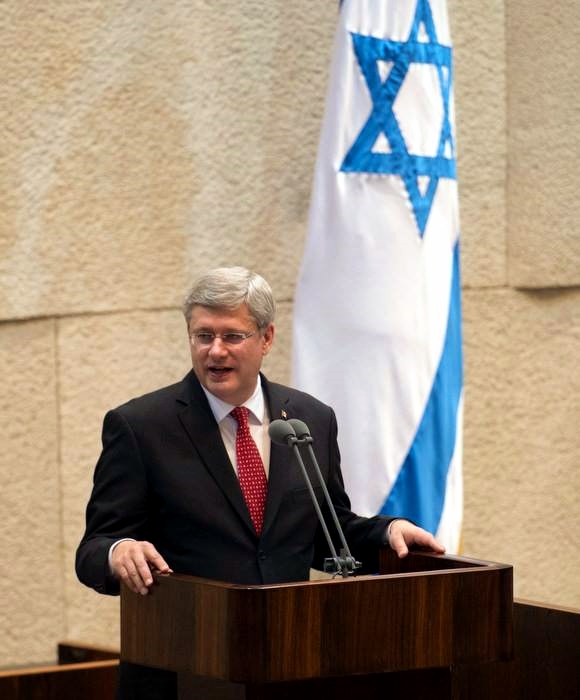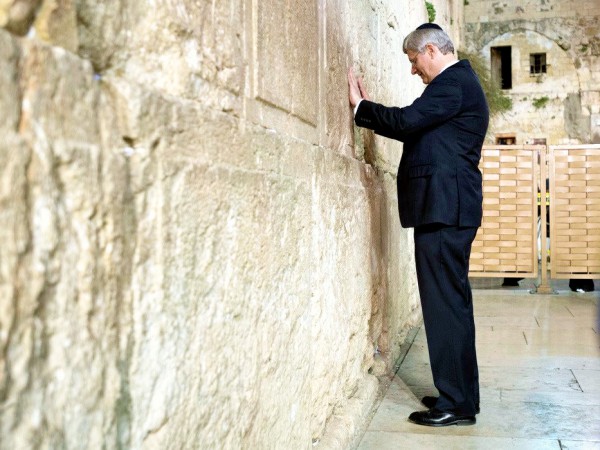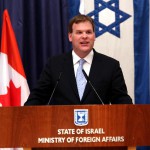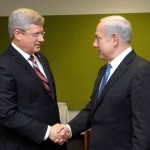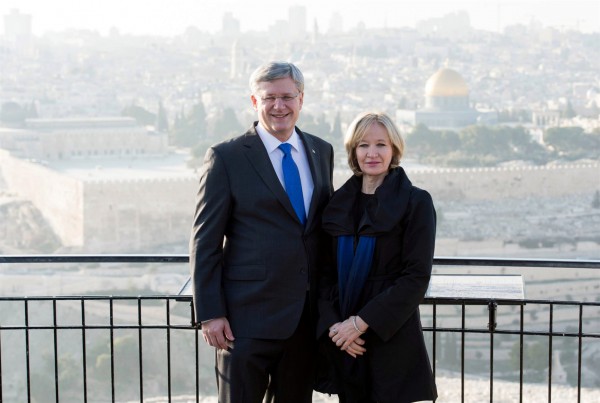
Canadian Prime Minister Stephen Harper and his wife Laureen pose on the Mount of Olives. Behind them is the Temple Mount.
Last week, Canada’s Prime Minister Stephen Harper was cheered and given standing ovations as he addressed the Israeli Parliament. In his speech, he emphasized “that the special friendship between Canada and Israel is rooted in shared values.”
“Through fire and water, Canada will stand with you,” he said.
He stated that it was “right to support Israel because, after generations of persecution, the Jewish people deserve their own homeland and deserve to live safely and peacefully in that homeland.
“Let me repeat that: Canada supports Israel because it is right to do so.”
Harper continued, saying that it is “a Canadian tradition to stand for what is principled and just, regardless of whether it is convenient or popular.”
In his speech, Harper condemned those “who hold the differences of peoples and cultures in contempt. Those who often begin by hating the Jews… end up hating anyone who is not them.”
“Most disgracefully of all, some openly call Israel an apartheid state.… Think about the twisted logic and outright malice behind that: a state, based on freedom, democracy and the rule of law—that was founded so Jews can flourish as Jews, and seek shelter from the shadow of the worst racist experiment in history. That is condemned, and that condemnation is masked in the language of anti-racism,” Harper said.
“It is nothing short of sickening,” he stated. (CBC)
In a move that Netanyahu said highlighted the Israel’s democratic nature and freedom, two Arab Knesset members, Ahmed Tibi and Taleb Abu Arar, interrupted this statement—midway through Harper’s address—with disruptive shouts, and then walked out of the chamber.
Tibi’s stunt drew much media attention in Canada, and he said he would be in Canada in the spring to lecture and give interviews.
“I wanted to hurt Harper in Canada because of his pro-Israel policies, and I think I succeeded,” Tibi said. “I am looking forward to visiting Toronto for the first time. Everyone says it’s nice there. But I promise to not run against him in Canada if he doesn’t run here.” (JPost)
It was the first speech ever by a Canadian prime minister in Israel’s Knesset and his first visit to Israel since becoming Canada’s prime minister in 2006. He came with a delegation of 250 people, which included parliament members, businessmen, and Jewish and Christian community and church leaders.
The next day, Harper challenged anti-Israel media bias at a joint press conference with Israel’s Prime Minister Benjamin Netanyahu, after he was asked to comment on Jewish settlements in Judea and Samaria (West Bank).
Harper pointed out to the press that while he was in the Palestinian Authority (PA), no one asked that he single out the PA for how it governs or practices civil rights, but that he is continually asked to single out and criticize Israel everywhere he goes—in Israel, in the PA, and in “half the other places around the world.” (JP)
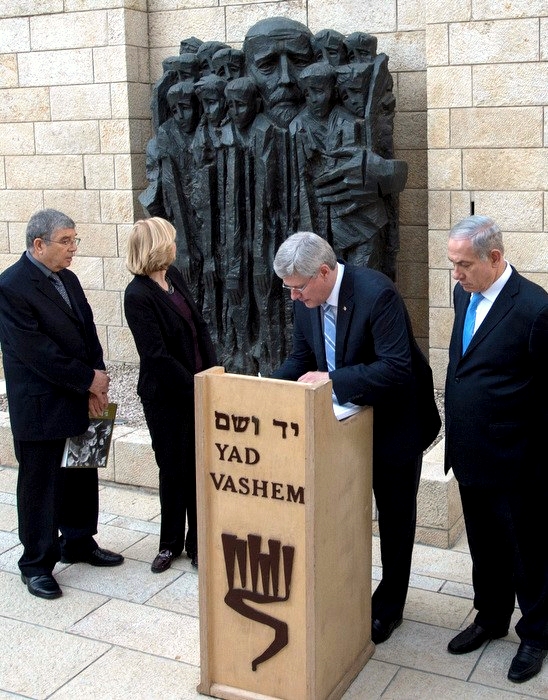
Canadian Prime Minister Stephen Harper signs the visitor’s book at Jerusalem’s Yad Vashem, the Jewish People’s memorial to the Holocaust, while Israeli Prime Minister Benjamin Netanyahu looks on.
Netanyahu took the opportunity to poke a hole in prevailing myths concerning Jewish settlements.
He said that the world erroneously calls them “the root of the Middle East conflict” even though the settlements arose many years after the many Middle East conflicts had begun.
“This conflict began in 1920, 1921, with the attack on the Jewish immigration depot—murderous attack—in Jaffa. In Jaffa! And it raged on in the attack on the ancient Jewish community of Hebron,” Netanyahu said. “[The conflict] continued in the great attacks by the Palestinians on the Jews here in 1936 to 1939. There were no settlements there.
“It continued in the rejection of the partition resolution in 1947 that called for… an Arab state actually next to the Jewish state. There were no settlements.
“And it continued right up to 1967 when the West Bank, Judea, Samaria and Gaza were firmly in Arab hands,” he said. “And it was meant to—to do what? To liberate the lands that were already in their hands?” (JP)
Later that day, Harper visited the Western Wall where he was welcomed with cheers from hundreds who were gathered.
In accordance with Jewish tradition, he solemnly placed a written prayer in the Wall.
“As Prime Minister Harper approached the Western Wall, I could not help but think about how the Jewish people struggled for thousands of years for the freedom to pray at our holiest site. As a child survivor on the run during the nightmare of the Holocaust, this moment is more than I could ever have imagined or hoped to have been part of,” said Eric Bissell. “To witness such support is a true miracle.” (Algemeiner)
Earlier in the afternoon, Harper visited Yad Vashem, Israel’s memorial to Holocaust victims.
He wrote in the museum’s guest book, “They are remembered always, in our hearts, in our prayers and most importantly in our resolve. Never again.” (Ottawa Citizen)




